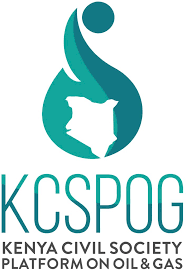Adapting Environmental regulations should adequately Address Water Quantity Concerns
By Samantha Luseno, Resource Mobilization and Partnership Engagement Officer-KCSPOG
Published in the Standard Newspaper on Friday 13th November 2020
Since the discovery of commercially viable oil reserves in Turkana County the government through the implementing entities have adapted to mitigate the environmental impacts through legislative changes. The Petroleum Act, 2019 encompasses provisions on environmental compliance and waste management. More recently, the State Department for Petroleum and National Environment Management Authority (NEMA) also published guidelines for oil and gas companies relating to waste management, and air quality. Majority of the provisions relating to water governance within these documents elaborately speak to the impact of exploration activities on water quality.
While the importance of these developments cannot be undermined, the documents appear to be largely silent on the impact of exploration activities on water quantity. Among the regions with Oil and gas exploration takes place, Turkana County is drought prone with residents facing challenges in access to water. Due to the severity of this challenge, the water scarcity issue has been flagged in both County Integrated Development Plans for the periods 2013-2017 and 2018-2022. The solutions put forward for enhanced access to clean water in the region included: collaboration with NGOs; enhancing the capacity of water service providers; harvesting underground and surface water sources, among others. Notwithstanding these efforts, drought and water stress in the region have persisted.
The Lokichar Oil project seeks to obtain water from the nearby Turkwel Dam which was initially built with a view to harnessing the waters of River Turkwel for hydroelectricity and domestic purposes like irrigation, fishing among other functions. Since then it has become a critical water source for not only household activities but various economic activities including livestock keeping. The extractive industry is notorious for being extremely water intensive and oil and gas exploration is not an exception. In fact, it is envisioned that 4 barrels (approximately 832 litres) of water will be required to produce one barrel of oil. In addition, emissions from oil production, which could last up to 30 years, could also likely exasperate the drought in the region as has been experienced in other resource rich countries. The possibility of these activities worsening water shortage in the region is a concern that needs further interrogation and mitigation..
Oil companies in the region also provide water to local communities to garner a social license to operate and in meeting social contractual requirements often incorporated into the production sharing contracts. Earlier this year when the Project Oil Kenya Joint Venture Partners issued a Force Majeure notice to the State Department for Petroleum, there were fears of interruption of supply of water to local communities reversing progress made in enhancing access to water. There is a likelihood that once the production phase comes to an end and oil companies exit the region’s water scarcity may re-emerge. The latter calls for a review of sustainable avenues for provision of water to communities in the region in partnership with county and national government agencies. For example, the Nakukulas-Lokicheda Water Reticulation Project if implemented correctly could be a case study in sustainability.
The review of the Environment Management and Coordination Act (EMCA), 1999 and development of environmental guidelines unique to the petroleum sector provide the perfect opportunity to incorporate provisions relevant to reducing the impact of extractive industry activities on water quantity. Firstly, it is imperative that the revised Act speaks to the role key stakeholders including the county government, communities and Civil Society Organizations (CSOs) play in monitoring of environmental phenomena. Incorporating a multi-stakeholder approach towards environmental monitoring would give a clearer indication of the impact of extractive activities on environmental phenomena including water quantity.
Scarcity of water affects different categories of the population in different ways and there is need to ensure opinions of minorities (women, elderly, and persons with disabilities) are adequately captured in public participation forums and proposals for mitigation included in Environmental and Social Impact Assessments (ESIAs). Therefore, the revised EMCA must require inclusive public participation in the ESIA process and allow for a provision on the development of a framework or guidelines to enhance public participation. The framework should include some qualitative indicators that measure effectiveness of the participation of minority groups, especially women given the patriarchal nature of the society in Turkana County. This can be done in collaboration with state agencies like the National Gender and Equality Commission (NGEC).
Information and data on the impact of extractive industry activities on water quality and quantity also remains scarce on public domains. This pauses a hindrance to oversight functions and proactive research to mitigate unintended consequences of extractive industry activities including oil and gas exploration and future production. The revised EMCA should uphold the spirit of the Constitution of Kenya, 2010 ensuring key provisions relating to information on licencing, environmental assessments, and environmental monitoring call for proactive disclosure.
Natural Justice in collaboration with Transparency International, Katiba Institute and KCSPOG have formulated a committee through which they have submitted comments on potential amendments to provisions and insertions to the EMCA 1999 for consideration by the NEMA.
